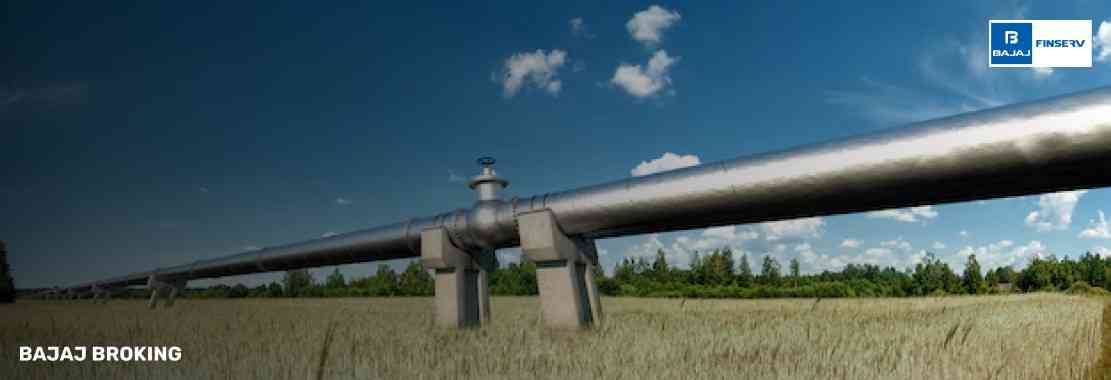Natural gas is an important energy source for any country, especially for a hugely populated one like ours. It plays a major role in generating electricity, heating requirements, and is also used as raw material in many industries. So it goes without saying that natural gas futures are a thing of interest for traders and investors. As is the case with futures in general, these also enable the trader to hedge against price volatility and speculate on market movements. Natural gas futures have a few more nuances to it and we will discuss them in detail right below.
Natural Gas Futures and Trading Strategies
Natural gas futures are standard buyer-seller contracts. In these contracts, the seller commits to sell and the buyer commits to purchase a certain quantity of natural gas for a fixed price on a future date. These futures can be bought and sold on exchanges such as the Multi Commodity Exchange (MCX) of India. Natural gas futures business thrives on information. It requires a careful understanding of the major market forces such as supply and demand levels, geopolitical situations, and seasonal conditions. To tackle the challenges in these trades, traders use certain strategies.
Day Trading: Sometimes concentrating primarily on intraday trading helps. The volatile nature of day trading brings a leverage to the trader and offers profit earning opportunities.
Range Trading: Range trading is where traders identify a range - between support and resistance levels- and trade within that range. This strategy also comes in handy in case of natural gas futures.
Breakout Trading: In certain cases, a sensational change in price occurs due to a breakout in the market, moving past established levels of support or resistance. Trading during these breakout periods can also prove to be profitable.
What is a Natural Gas Mini Contract?
A Natural Gas Mini Contract is a mini futures contract (as the name suggests) and is intended to make natural gas trading smoother and more convenient. This is especially true for retail investors or small capital holders. On the MCX, the mini contracts have a lot size of 250 million British thermal units (mmBtu) or more. Full size contracts are much larger in size. The tick size of an MCX Natural Gas Mini Contract is ₹0.10, which means that a price movement of ₹1 in one lot can provide a profit or loss of ₹250. Due to the reduced contract size, the traders can participate in the natural gas market with smaller margin requirements, offering more flexibility in handling positions and executing trading strategies.
Comparison of Natural Gas Mini and Standard Contracts:
Feature
| Natural Gas Mini Contract
| Standard Natural Gas Contract
|
Lot Size
| 250 mmBtu
| Larger (varies)
|
Tick Size
| ₹0.10
| ₹0.05
|
Margin Requirement
| Lower
| Higher
|
Trading Flexibility
| Higher
| Lower
|
The introduction of mini contracts has democratized access to natural gas futures trading, enabling a broader range of participants to engage in the market with reduced financial commitments.
Working of Natural Gas Mini Contracts
Natural Gas Mini Contracts are pretty much like regular futures contracts but with one change. They come with a reduced contract size, and are more affordable for retail traders. In order to trade in these contracts, traders must deposit a margin. This margin is usually a percentage of the value of the contract, to act as a guarantee in case any loss should occur. The amount of margin is set by the exchange and may fluctuate with market volatility and other external stimuli.
Key Features of Natural Gas Mini Contracts:
Contract Size: Each mini contract represents 250 mmBtu of natural gas.
Tick Size: The minimum price movement is ₹0.10, which roughly matches a profit or loss of ₹25 per tick.
Trading Hours: Trading facility is typically available almost throughout the day (24 hours) on five days of the week. This allows traders to respond to global market developments.
Benefits of Trading Natural Gas Mini Contracts:
Lower Financial Commitment: The smaller contract size reduces the capital required to participate in the market. This opens up opportunities for small-scale traders who cant invest much.
Enhanced Flexibility: Traders can scale positions more precisely, allowing for better risk management.
Accessibility: Individual investors can engage in natural gas trading without the substantial financial outlay associated with standard contracts.
By offering a more manageable entry point, Natural Gas Mini Contracts enable a wider range of traders to participate in the natural gas market, tailoring their exposure to align with their investment objectives and risk tolerance.
Comparing Natural Gas Futures and Regular Futures
While both natural gas futures and regular futures contracts serve as agreements to buy or sell an asset at a future date for a predetermined price, they differ in several key aspects:
Comparison Table:
Aspect
| Natural Gas Futures
| Regular Futures
|
Underlying Asset
| Natural gas, a commodity with prices influenced by factors like weather and storage.
| Varies widely, including commodities, financial instruments, and indices.
|
Market Participants
| Includes energy producers, utilities, and traders focusing on energy markets.
| Broad range, including farmers, manufacturers, financial institutions, and traders.
|
Price Influencers
| Weather patterns, geopolitical events, supply and demand dynamics.
| Specific to the underlying asset; for example, crop yields for agricultural futures or interest rates for financial futures.
|
Contract Specifications
| Standardized in terms of contract size, tick size, and expiration dates, but specifics vary by exchange.
| Similarly standardized, but details depend on the particular futures contract.
|
Understanding these differences is crucial for traders to develop appropriate strategies tailored to the specific characteristics of the futures contracts they are trading.
Key Factors Influencing Natural Gas Futures Prices
The price of natural gas futures is influenced by a number of factors. These factors can create significant volatility and they often do create it. Some of the most important influencers are as follows.
Supply and Demand Balance: Levels of production and consumption naturally influence price levels. When production is more than necessary, price declines. And when supply is less than required, price hikes up.
Weather Patterns: Since natural gas is a natural resource, weather conditions play a major role in influencing price. Natural disasters or challenging weather can often cause fluctuations in demand and supply.
Storage Levels: The amount of natural gas kept in storage facilities serves as a supply cushion. When these storage levels are low, it can lead to rising prices, especially during times of peak demand. High storage levels, on the other hand, can push the price downward.
Geopolitics: Political instability in major natural gas-producing regions can disrupt supply chains and impact prices. Sanctions, trade embargos, or conflict can lead to price spikes.
Regulatory Policies: Government policies and green policies, e.g., carbon tax or fracking restrictions, can impact the cost of production and availability, then impact prices.
Global Energy Market Trends: Movement within the broader energy market, e.g., crude oil and coal prices, can have a ripple effect on natural gas prices, as they are demand-pattern interlinked.
Understanding these factors is essential for traders who desire to forecast MCX natural gas price movements and create well-informed trading strategies in natural gas futures markets.
Final Thoughts
Natural gas futures give investors and traders the chance to hedge against price movement or speculate on market direction. With the availability of contracts in various sizes, ranging from mini contracts, participants can choose the most appropriate size according to their risk tolerance and available capital.
Natural gas investing requires a good understanding of market dynamics. This includes concepts such as supply-demand adjustments, geopolitical events, and regulation. As with all futures trading, risk management is way too important, and traders should employ tools like stop-loss orders and position sizing to limit possible losses.












